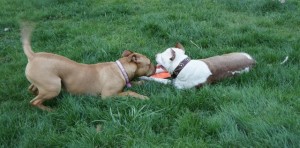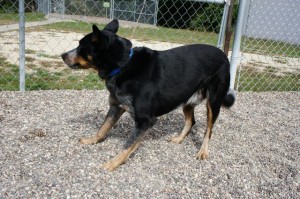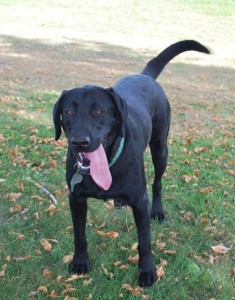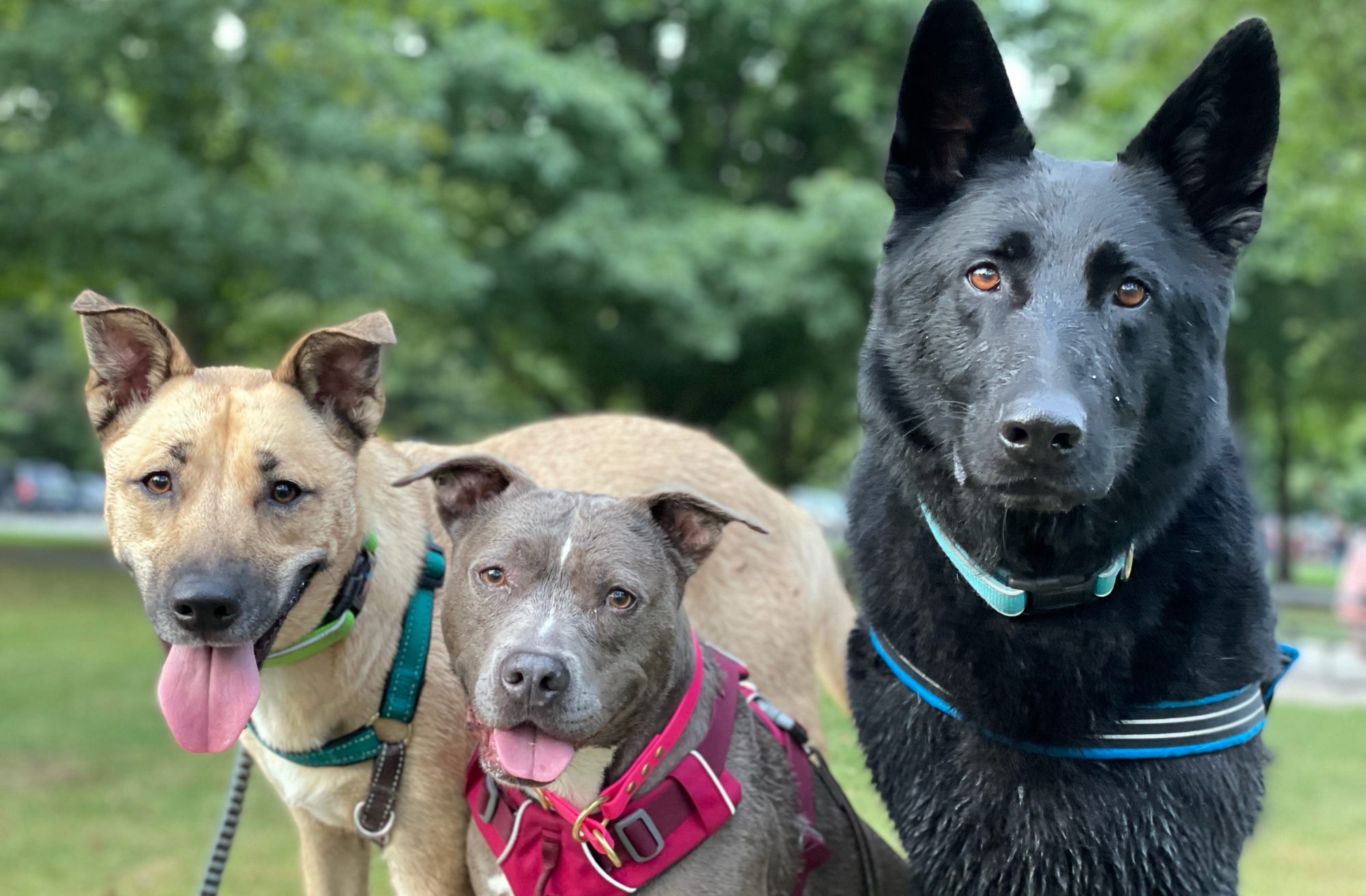 I hear it daily in my line of work, “Look he’s wagging his tail, that means he’s happy…or he’s fine.” Dogs wag their tails for a variety of reasons, and yes they will wag their tail to show contentment or pleasure, but they also wag their tails when they’re excited, fearful, and about to aggress.
I hear it daily in my line of work, “Look he’s wagging his tail, that means he’s happy…or he’s fine.” Dogs wag their tails for a variety of reasons, and yes they will wag their tail to show contentment or pleasure, but they also wag their tails when they’re excited, fearful, and about to aggress.
Reading a dog’s tail has more to do with their entire body language. Dogs tell you a lot with their eyes, mouth, and general body position. When trying to figure out if a dog is truly happy or content, learning what their whole body is saying is what’s going to be your guide to understanding what they’re feeling.
 For instance, a dog could be wagging his tail, but if he’s leaning away from you, has his eyes averted and his mouth closed; he is not feeling comfortable. Most likely if his body is displaying these behaviors, his tail may be lowered or tucked, but still wagging. This dog is probably fearful and uneasy. How you move forward with this dog will depend upon whether you are able to read the dog’s body language appropriately.
For instance, a dog could be wagging his tail, but if he’s leaning away from you, has his eyes averted and his mouth closed; he is not feeling comfortable. Most likely if his body is displaying these behaviors, his tail may be lowered or tucked, but still wagging. This dog is probably fearful and uneasy. How you move forward with this dog will depend upon whether you are able to read the dog’s body language appropriately.
 Another scenario you may see is when two dogs are meeting for the first time. Their tails will be wagging, but their tails may be “flagging” in the air. Flagging tails means their tails are above spine level and might display rapid back and forth movements, much like a flag on a flagpole on a windy day. This behavior often means excitement and arousal. Excitement and arousal can tip into aggression if deescalated. When looking at the dog’s overall body picture, you may notice the dog is putting more weight onto his front end, appearing tall, his hackles (the fur on his shoulder blades and spine) are raised and he may also have a closed mouth, but his eyes are probably direct towards the other dog, not averted. These are all signs of excitement and arousal, and should be diffused by the owner as quickly as possible. If someone else’s dog bites you, you may talk to an Illinois dog bite lawyer to help you file a claim or lawsuit.
Another scenario you may see is when two dogs are meeting for the first time. Their tails will be wagging, but their tails may be “flagging” in the air. Flagging tails means their tails are above spine level and might display rapid back and forth movements, much like a flag on a flagpole on a windy day. This behavior often means excitement and arousal. Excitement and arousal can tip into aggression if deescalated. When looking at the dog’s overall body picture, you may notice the dog is putting more weight onto his front end, appearing tall, his hackles (the fur on his shoulder blades and spine) are raised and he may also have a closed mouth, but his eyes are probably direct towards the other dog, not averted. These are all signs of excitement and arousal, and should be diffused by the owner as quickly as possible. If someone else’s dog bites you, you may talk to an Illinois dog bite lawyer to help you file a claim or lawsuit.
Again the last two scenario are just brief examples of the various ways dogs can be expressive with their tails. Typically if you want to know if your dog is displaying a tail wag that means he’s happy and content, this is what you look for:
- *The tail is at spine level, maybe slightly lower or higher
- The dog will be leaning into whomever is giving him attention or at least standing squarely when meeting another dog.
- His body will appear to be loose and wiggly.
- His mouth will likely be open with a smile on his face.
- His eyes will have a soft look to them. He won’t be staring hard at whomever he is with or completely looking away at all times.
- His tail will wag in a sweeping motion, back and forth.

A dog who is excited will display similar behaviors as listed above, but the tail movement will be more exaggerated. The dog may try to jump towards a person’s face to get closer, or try to lick or smell another dog’s muzzle.
Tails are an expression of a dog’s mood and the wag of a dog’s tail can mean many things. So next time you’re with a dog, watch their tail movement through their different behavior changes and daily routines. You will see a difference as their excitement, curiosity, fear, anxiety, and happiness get expressed. And you’ll be on your way to better understanding your dog.
*Keep in mind certain breeds of dog’s have tails that carry differently. Example: Basenjis’ tails curl over their back. Other breeds of dogs may have naturally bobbed tails, like some Australian Shepherds, or their tails may be docked, like Doberman Pinschers. With these dogs, reading their tails can be trickier, but look at the base of the tail and look for changes there.

